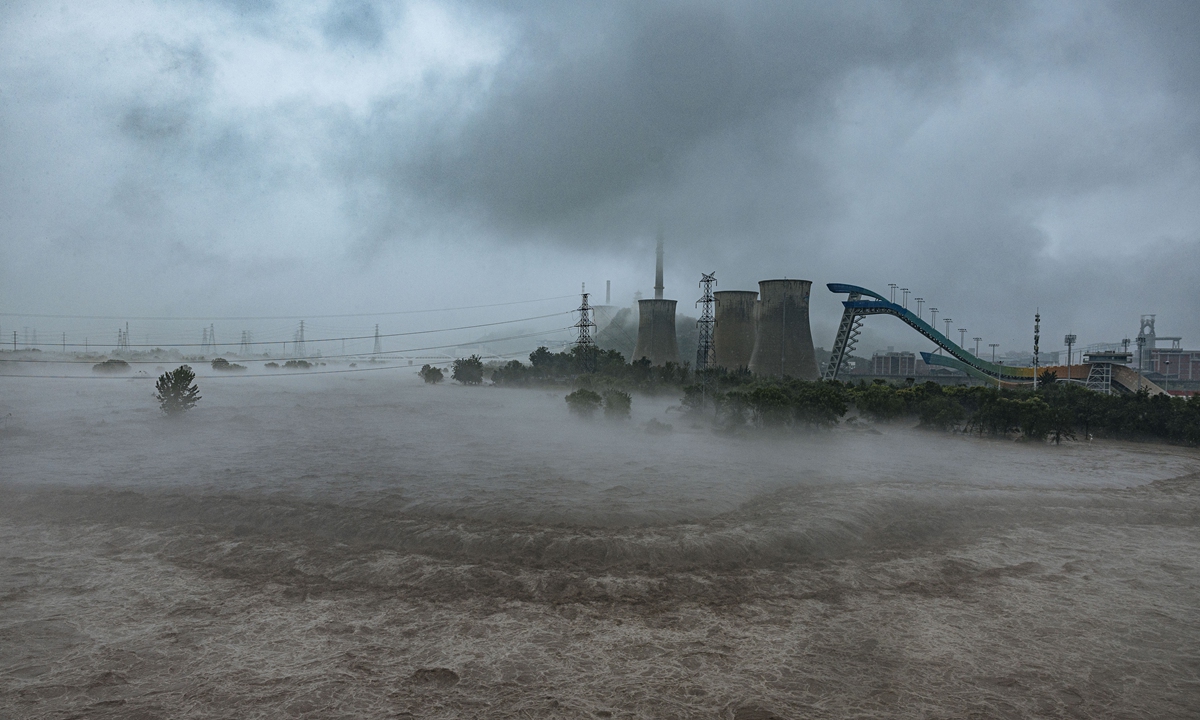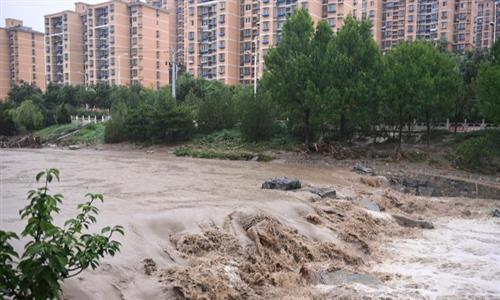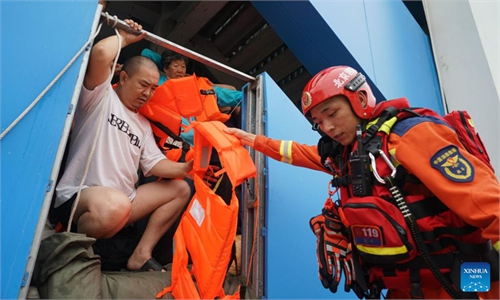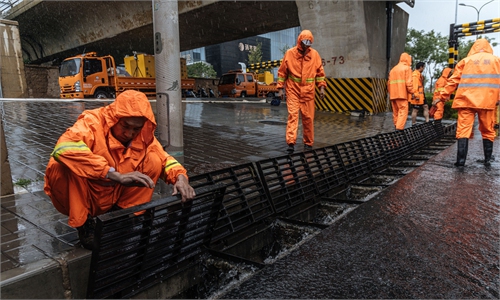
Water levels rise quickly on August 1, 2023 at Shougang Bridge over the Yongding River, fl ooding part of the Winter Olympic park, in Beijing's Shijingshan district. In the background is the Shougang Ski Jump Platform, a venue for the Beijing 2022 Winter Olympics. Photo: Li Hao/GT
A total of 33 people have died with a further 18 missing as of Tuesday in Beijing following severe flooding, a Beijing city government official confirmed on Wednesday.
Affected by Typhoon Doksuri, the Chinese capital has suffered extensive flooding caused by the heaviest rainfall in six decades from July 29 to August 2.
After reporting casualties as of Tuesday, Beijing government officials expressed deep condolences to the comrades who sacrificed their lives in the line of duty and to victims during a press conference on Wednesday.
According to the official, the flood disaster has affected nearly 1.29 million people, leaving about 59,000 houses destroyed and 147,000 damaged, and 225,000 mu (15,000 hectares) agricultural area affected. "Currently, disaster-related losses are still preliminary figures, and assessment of property damage remains ongoing," the official said.
Beijing recorded extreme rainfall of 744.8 millimeters during rainstorms between the evening on July 29 and the morning of August 2, making it the heaviest deluge to hit the city in 140 years, the Beijing meteorological authority announced.
The last extreme rainstorm in Beijing was on July 21, 2012 when 79 residents were killed with rainfall exceeding 541 millimeters.
The official said Beijing will be fully engaged in post-disaster recovery and reconstruction work. Efforts will be made to finish the restoration of water-damaged hydraulic facilities, the repairs and reinforcement of damaged houses of rural residents, and the construction of infrastructure such as transportation, energy, communication, and public service facilities within a year to ensure the basic livelihoods of local residents.



